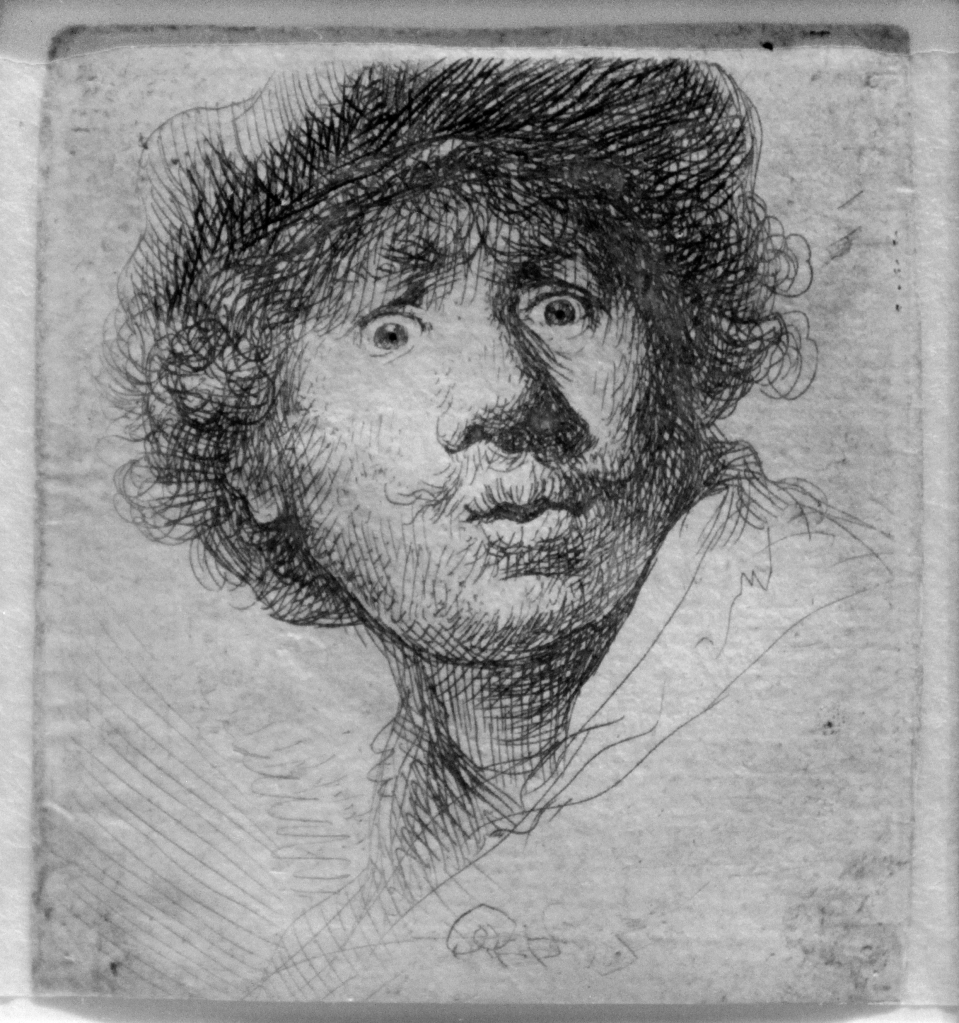February Art: selfie
Rembrandt is justly best known for his paintings; not least his later portraits, including self-portraits with his bulbous features daubed unsparingly in thick oil impasto. This exquisite early selfie (1630!), made presumably for his own amusement, shows a lighter side to his self-obsession. Because he was also, I think, the finest etcher in history, conjuring meticulous cross-hatched interiors, character studies, and brooding Biblical scenes out of the unpromising materials of metal and acid, something I discovered in an overwhelming basement exhibition at the Albertina in Vienna.
Rembrandt makes etching look easy: most people require preparatory drawings but (as here) he often drew directly onto a copper plate covered with mix of resin and beeswax, using a needle to scratch until the copper showed through. An acid bath then etches the lines onto the plate which can afterwards be inked and passed through a press to put the drawing on paper. The process can be repeated and the plate reworked, generally to add darkness or complexity, each time producing the image in a new ‘state’. In expert hands the first state especially can be light, quick, joyous: there’s a kind of magic in ravelling soft flesh out of such thin lines, a face caught through a blizzard of hair peering quizzically, in mock-alarm, at himself – a self reversed of course in the mirror, but then also printed in reverse, so himself, no other, wondering at us maybe, who in return wonder back (though we should know, we’ve been told) how on earth it is done.


